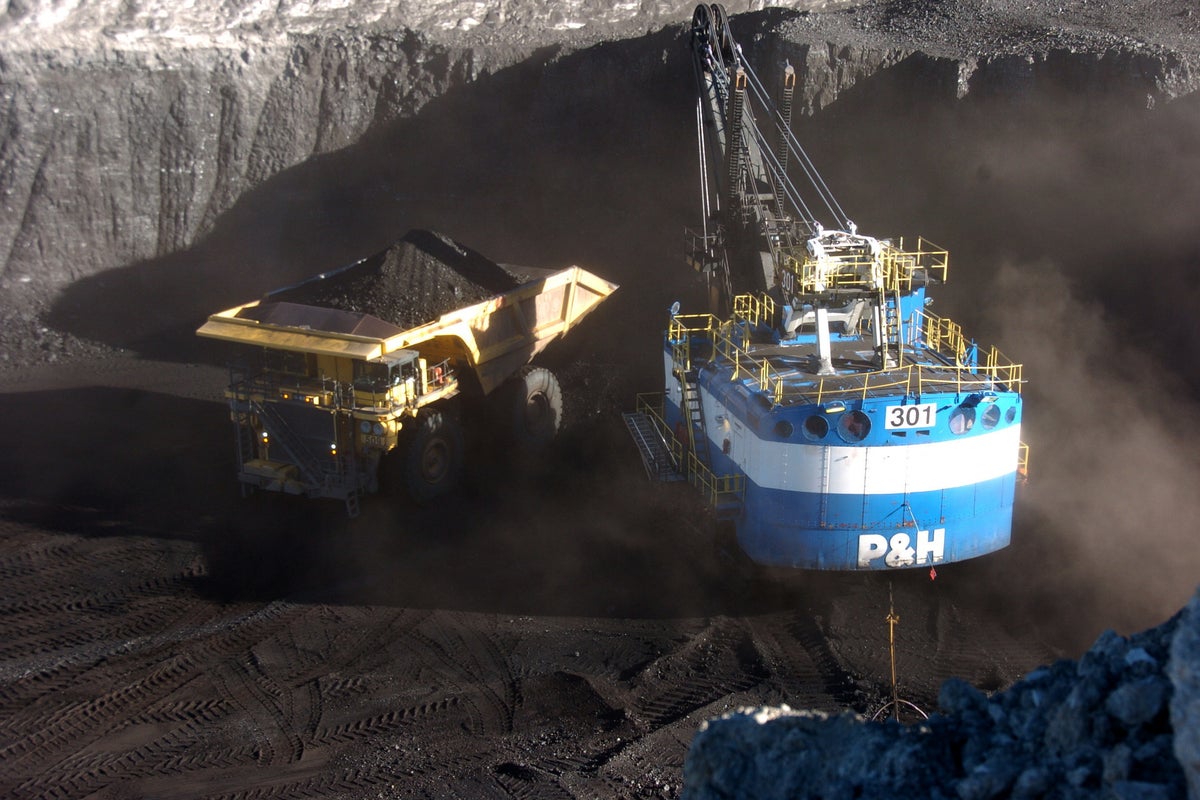Business
Trump Moves to Sell 600 Million Tons of Coal Despite Declining Demand

U.S. officials are preparing to conduct the largest coal sales from public lands in over a decade, offering up to 600 million tons from reserves adjacent to strip mines in Montana and Wyoming. This initiative aligns with President Donald Trump‘s strategy to encourage increased coal extraction from federal lands, despite the looming question of market viability as many power plants associated with these mines plan to discontinue coal usage within the next decade.
The sales, set to commence on Monday, are concentrated in the Powder River Basin, which is the most prolific coal-producing region in the United States. Notably, these actions proceed even as the government faces a shutdown, with workers processing fossil fuel permits exempt from furloughs. This contrasts sharply with actions taken by President Joe Biden, who has sought to block future coal leases in the region due to their potential contributions to climate change.
According to a recent analysis by the Associated Press, burning the coal from the upcoming leases could produce over 1 billion tons of carbon dioxide, a significant contributor to global warming. Trump’s dismissal of climate change as a “con job” during a speech at the U.N. General Assembly reflects a broader policy approach that prioritizes fossil fuel production over renewable energy initiatives.
The administration’s push to expedite coal lease approvals began on Trump’s first day in office in January, with greenhouse gas emissions considerations largely disregarded. In addition to Montana and Wyoming, coal expansions and lease sales have been advanced in states such as Utah, North Dakota, Tennessee, and Alabama. Interior Secretary Doug Burgum announced plans to open over 20,000 square miles of federal land for mining, a territory larger than both New Hampshire and Vermont combined.
The declining demand for coal, however, poses serious challenges. The AP‘s findings indicate that power plants served by mines on public lands have significantly reduced their coal consumption, a trend that has persisted since 2007. Energy experts express skepticism about coal’s potential to reclaim its former dominance in the energy sector. For instance, Umed Paliwal, an expert at the Lawrence Berkeley National Laboratory, suggests that while Trump’s initiatives may provide a temporary boost to coal, the market will eventually phase it out.
The coal sales set to be auctioned in Montana and Wyoming were requested by the Navajo Transitional Energy Company (NTEC), a significant player in the coal industry since acquiring major mines in the Powder River Basin during a bankruptcy auction in 2019. NTEC has indicated that the fair market value of 167 million tons of federal coal near its Spring Creek mine is approximately $126,000, which equates to less than one-tenth of a penny per ton. This starkly contrasts with the last large-scale lease sale in the region in 2013, which drew a bid of $35 million for the same amount of coal.
Looking ahead, NTEC acknowledges that the market for coal is expected to decline significantly over the next two decades due to fewer coal mines expanding their reserves and an increase in regulatory constraints. With many power plants scheduled to cease coal operations, including 21 of the 34 plants supplied by NTEC, the future of coal extraction remains uncertain.
In a somewhat contrasting perspective, Peabody Energy, the largest coal company in the U.S., recently suggested that coal demand could increase by 250 million tons annually, based on the premise that existing power plants might increase coal consumption. This optimistic outlook hinges on the delayed construction of new nuclear and gas plants, with Peabody’s president, James Grech, asserting that “U.S. coal is clearly in comeback mode.”
Despite this optimism, the absence of new large coal power plants since 2013 and the age of most existing plants—many over 40 years old—contributes to uncertainty. The administration’s financial commitments to refurbish older plants may not be sufficient, given that replacing a single boiler component can cost as much as $25 million.
The overarching question remains: who will buy the coal? Nikhil Kumar, from the energy consulting group GridLab, emphasizes the challenge, stating, “I don’t see where you get all this coal consumed at remaining facilities.” As the energy landscape evolves, the long-term viability of coal in the U.S. remains in question, highlighting the complex dynamics between environmental policy, market demand, and the future of energy production.
-

 World2 days ago
World2 days agoCoronation Street’s Shocking Murder Twist Reveals Family Secrets
-

 Entertainment4 months ago
Entertainment4 months agoKate Garraway Sells £2 Million Home Amid Financial Struggles
-

 Entertainment3 months ago
Entertainment3 months agoAnn Ming Reflects on ITV’s ‘I Fought the Law’ Drama
-

 Health3 months ago
Health3 months agoKatie Price Faces New Health Concerns After Cancer Symptoms Resurface
-

 Entertainment3 weeks ago
Entertainment3 weeks agoCoronation Street Fans React as Todd Faces Heartbreaking Choice
-

 World3 weeks ago
World3 weeks agoBailey Announces Heartbreaking Split from Rebecca After Reunion
-

 Entertainment5 days ago
Entertainment5 days agoTwo Stars Evicted from I’m A Celebrity Just Days Before Finale
-

 World5 days ago
World5 days agoKevin Sinfield Exceeds Fundraising Goal Ahead of Final Marathons
-

 Entertainment3 months ago
Entertainment3 months agoCoronation Street’s Carl Webster Faces Trouble with New Affairs
-

 Entertainment3 months ago
Entertainment3 months agoWhere is Tinder Swindler Simon Leviev? Latest Updates Revealed
-

 Entertainment4 months ago
Entertainment4 months agoMarkiplier Addresses AI Controversy During Livestream Response
-

 Science2 months ago
Science2 months agoBrian Cox Addresses Claims of Alien Probe in 3I/ATLAS Discovery





















